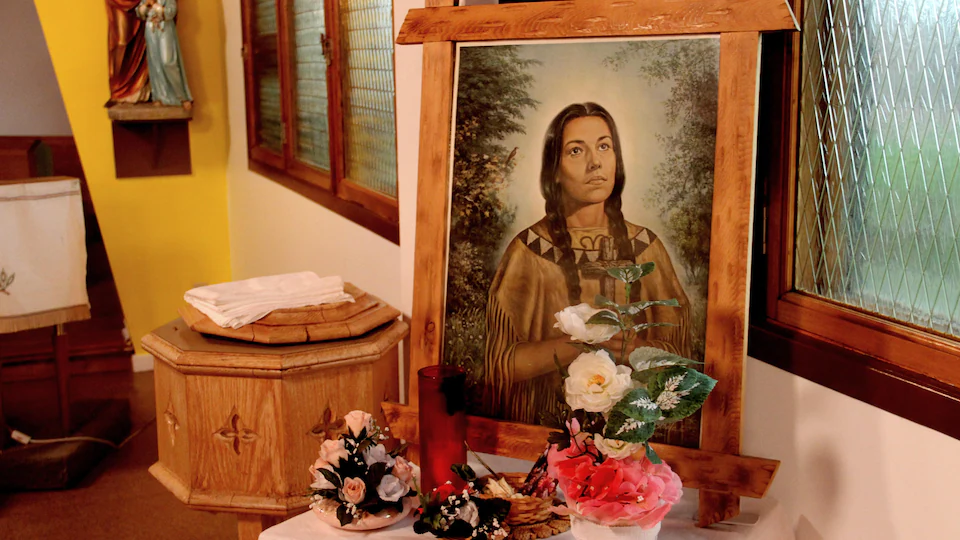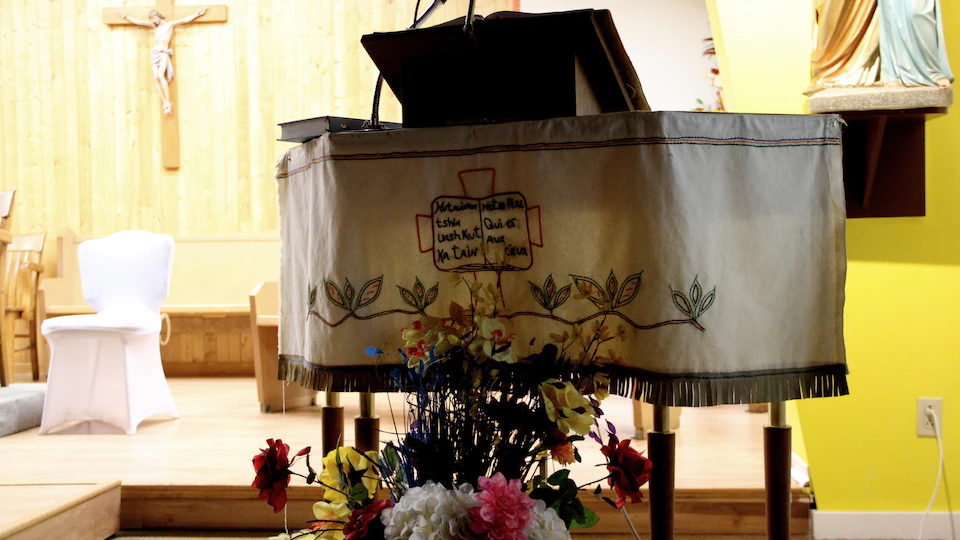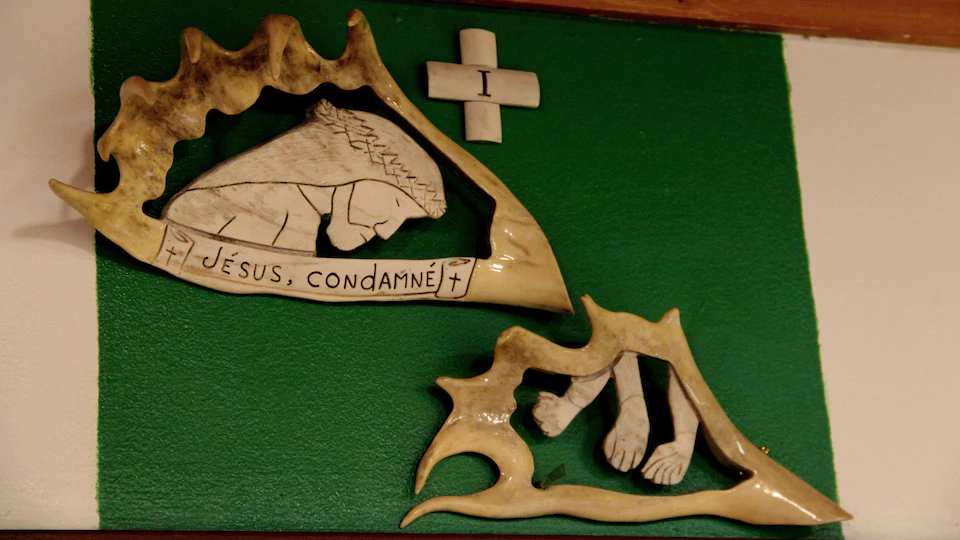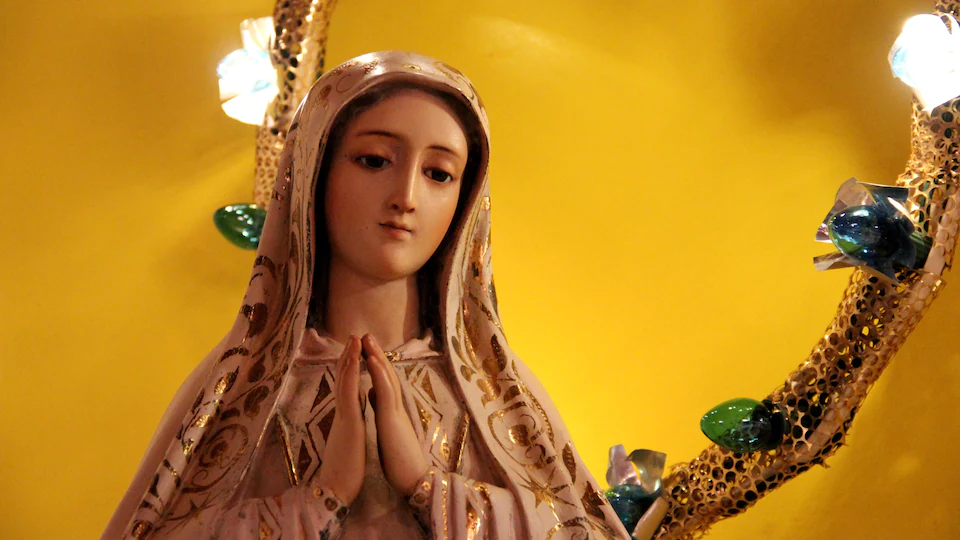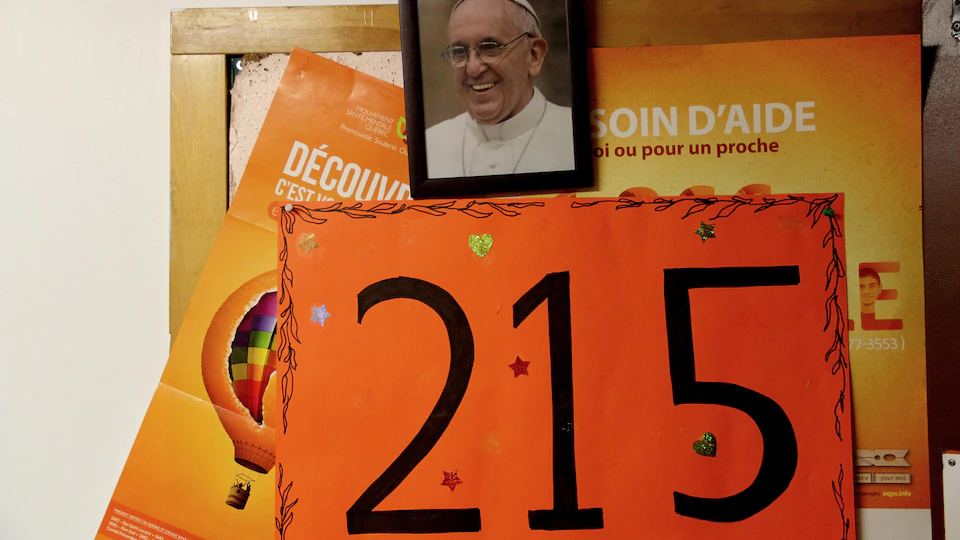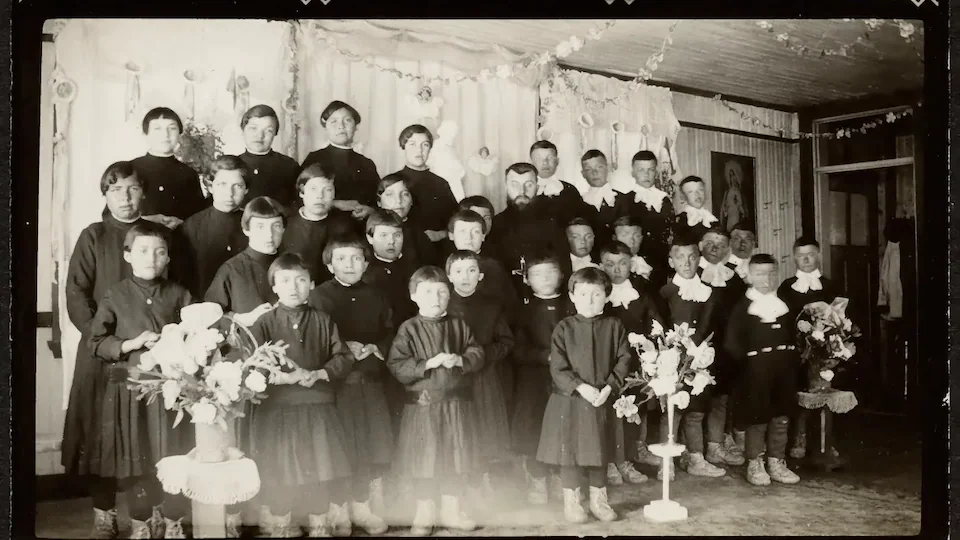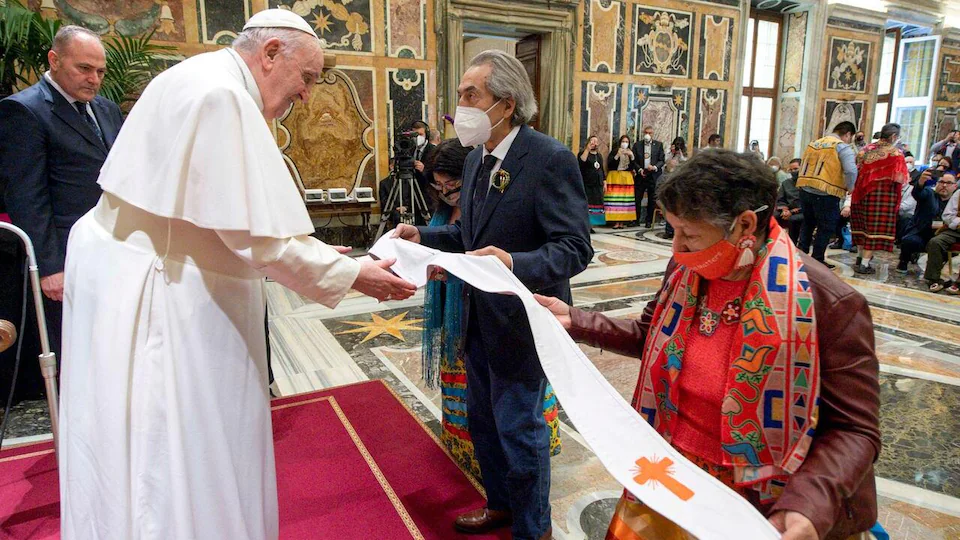People call me father Ali. To be called priest, that does not join me
he explains in his living room which is glued to the church of the community.
Like any self-respecting man of faith, he wears the cross around his neck. More original, he wore a traditional Innu jacket that the community gave him. On the wall, a crucifix. In his library, an edition of the Bible translated into Innu-aimun and, next to his television, a huge dreamcatcher.
Ali Nnaemeka navigates between two worlds which, for a long time, clashed more than loved each other.
The Missionary Oblates of Mary Immaculate operated 48 boarding schools across the country. Priests from this congregation have been accused of abusing and raping some children. facts that have colored the relationship between Aboriginals and the Oblates
according to Father Ali.
In his native Nigeria, he was far from knowing this dark past. After responding to an international call from the congregation, he flew to Canada without knowing anything about Aboriginal people.
No way for him to read the story books about them before his arrival in December 2014. Ali Nneameka wanted to make up his own mind, to see with his own eyes and not have a biased opinion by the story told by the colonizers.
Learn the culture
I did a year of cultural immersion in Maliotenam. I’ve also been in sweat lodges, watched sun dances…
he lists.
Father Ali also learned the basics of Innu-aimun. He understands it, reads it, but does not speak it.
Moreover, all his masses are in the native language, except the homily, this speech of several minutes pronounced by the priest supposed to encourage the faithful to reflect.
He even goes so far as to say that he has found certain things in the Innu culture close to his own: purification, the importance of family, language…
And if I can understand that water purifies the body and the mind as a symbol that acts on faith, why couldn’t I find the same among the Aboriginal people?
he asks himself.
A church in the image of the Innu
In the church of Matimeksuh–Lac John, the faithful feel that she has something different.
The Way of the Cross of Christ is illustrated, or rather engraved, on caribou antlers, the tabernacle is covered with a fabric with First Nation motifs, the portrait of a faithful, hands joined, representing an Aboriginal woman with her braids is placed on a table…
At the entrance, a photo of Pope Francis is displayed above a huge sign indicating the sad figure 215
which refers to the alleged remains of children discovered a year earlier in Kamloops, British Columbia.
Opposite, many photos of deceased Innu.
My wish would be to use sage. Sometimes it is used at funerals if the family requests it. It’s important to me to use a local element, because it allows everyone to participate
he explains.
The drum is also sometimes used for these same sad occasions. But I don’t force it. You know, for a long time we told them it was forbidden and we forced them to give it up, today we can’t impose on them what they were forbidden
he explains with a quiet and calm tone.
The priest believes that these deviations
with Catholic decorum must come from the Aboriginal peoples themselves.
” They had been made to believe that this was not normal. So it’s ingrained in them now. »
Father Ali would not understand why a sacred object like the drum would not have its place in a place sacred
like the church. What he especially wants is to avoid including a kind of folklorism in his celebrations.
Replacing the host, this unleavened flat bread, with bannock would be an example of folklorism, according to him. But there is still a limit to sprains
to the protocol he is prepared to accept.
” Nor can the whole structure of the Mass be changed. But we can change the way we celebrate it. »
And what about this forced Christianization of Aboriginal people in the past? Whether people come to mass or not, I don’t care. I don’t want to force anyone, it’s the best way to keep them away. I much prefer that a person come to mass knowing that they can leave after five minutes
he further details.
A heavy legacy
The heritage of the Oblates sticks still and always to the missionaries. But Father Ali decided to take things differently. Rather, he feels privileged
to be there and not not carry History as such
.
He adds : Yes, my colleagues have done harm, but they are also your brothers. Yes, we must denounce what happened, but we must also do something for the healing. I can’t change the past, but help the community to follow its path
he adds, without hesitating to speak of massacre
when referring to residential schools.
” I find myself on the side of the executioners, on the dock, but I am also on the other side, because I am with these people, they are my family and I suffer with them. »
The apologies and the presence of the pope are eagerly awaited by the Aboriginal believers. Despite his health problems, François decided to come to Canada in July. Will the program change?
He will come, I trust this man
he assures.
Because the faithful need it, no matter that there are those who say that apologies are useless.
They are people who believe, who practice [leur foi, NDLR]they are happy to be able to meet him
he presses.
Father Ali is fundamentally attached to the Innu community of Matimeksuh–Lac John, but also to that of Ekuanitshit, for which he is also a priest. This forces him to divide his time between the two.
And everyone knows him, many ask him to pray for them.
But Father Ali will not stay here long. He already warns that in the near future he will leave. His new mission: to finish his training in theology, the subject of which is the relationship between native spirituality and Christian spirituality.
The mission of the Innu priest: to reconcile Aboriginal people with the Church

